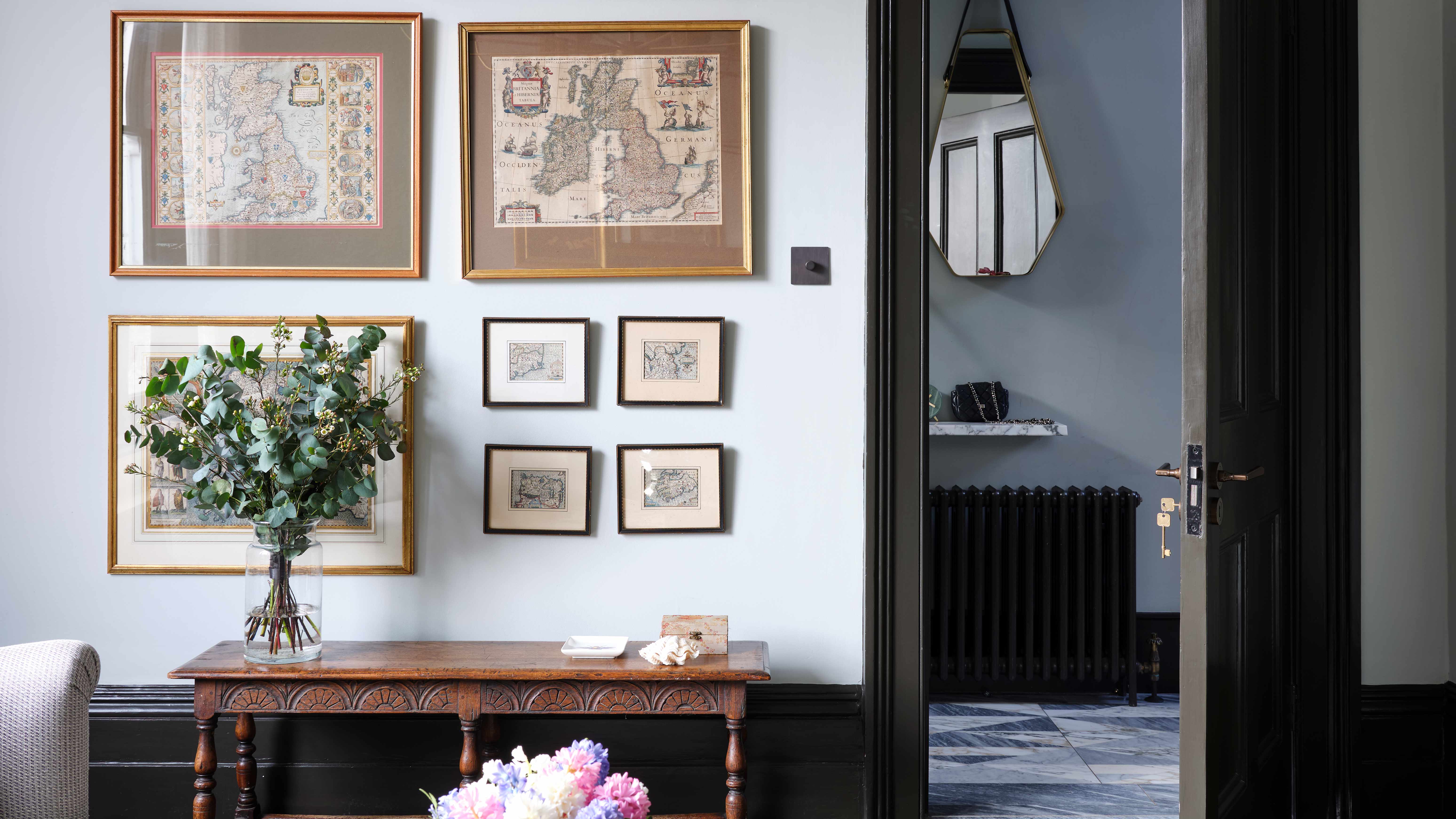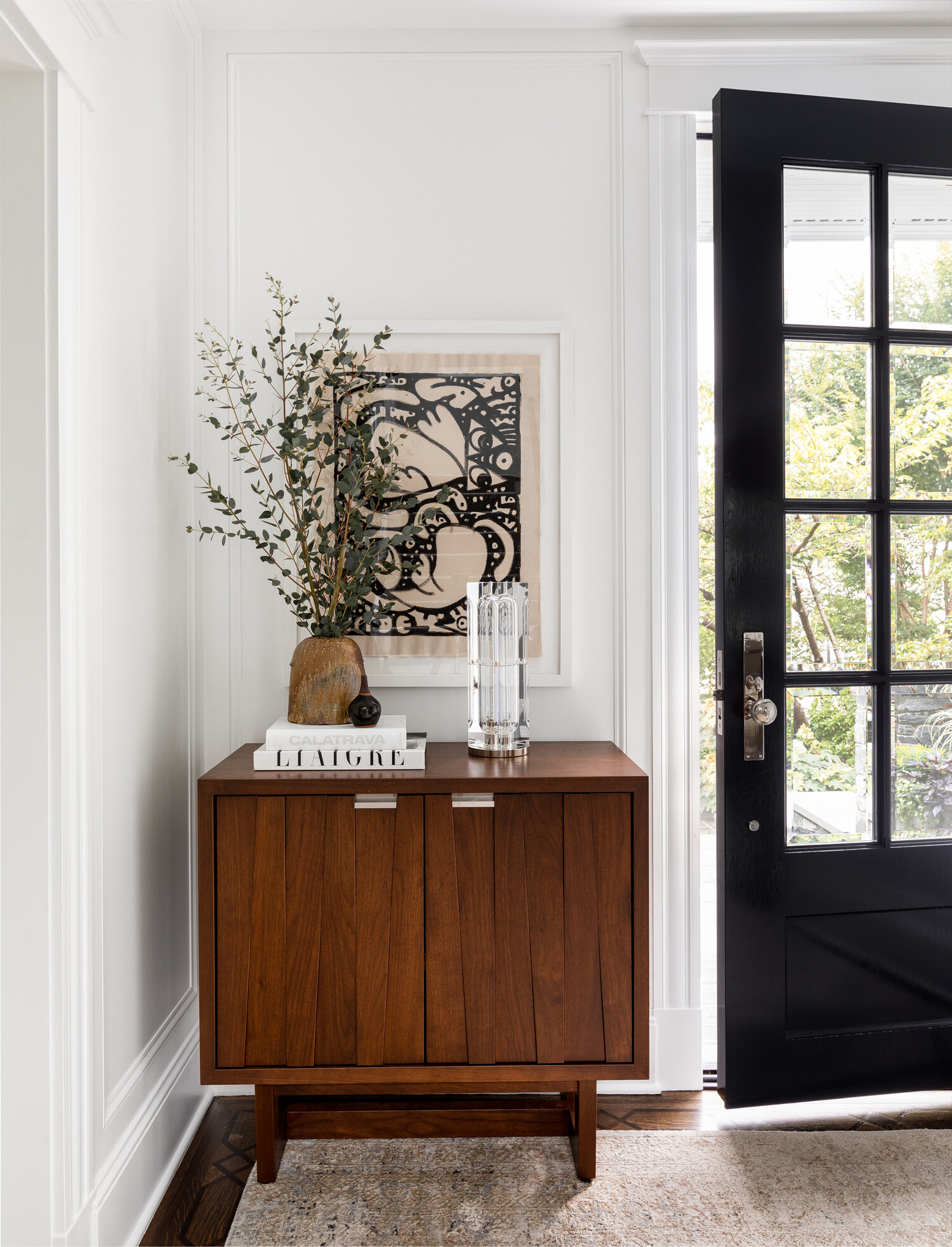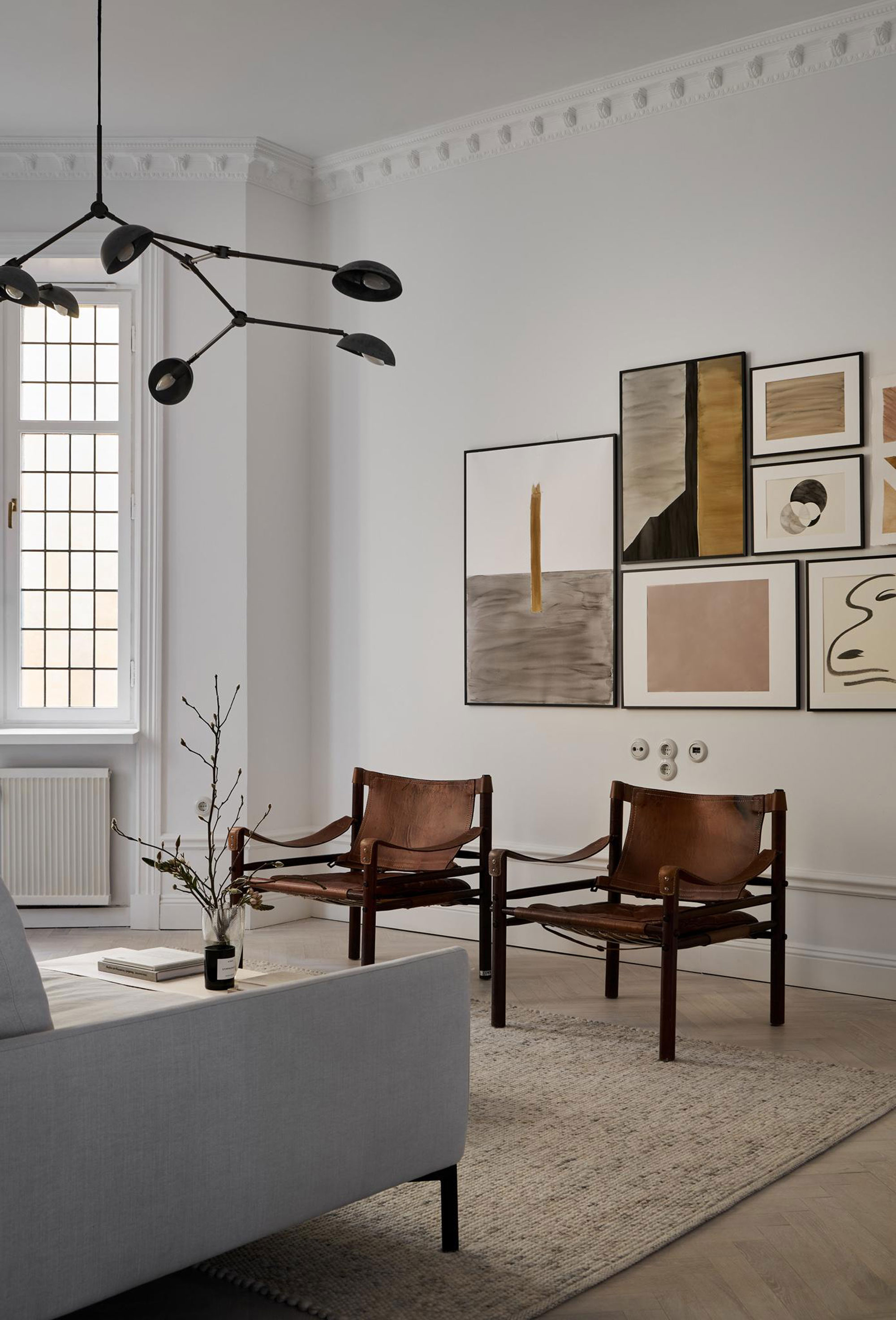I've just discovered a picture hanging hack which hides electrical panels but doesn't obstruct them and my mind is blown
We all have spots on our walls we'd rather not see. Now you can disguise them with this clever DIY hack


Have you ever thought the electrical panel in your home was unsightly? We certainly have. If you're not sure what we're talking about, they're those grey metal boxes (sometimes known as a breaker box or panelboard) usually built into your entryway's wall and they contain all the circuit breakers for your home. While they undoubtedly have an important function, they can be a bit of an eyesore, and, if you're anything like us, you probably want to hide it.
Well luckily, you can with this clever take on gallery walls. Thanks to a well-kept DIY trick, you can hide your electrical panel - or any other unsightly spot on your walls - with just a piece of artwork in a picture frame. No we know what you're thinking - you still need easy access to those all important electricals and removing a picture every time you need to get in there is far from convenient. Well this is where our hinge hack comes in. Curious yet? We explain how it's done.

Lilith is an expert at following news and trends across the world of interior design. She's committed to helping readers make the best choices in their homes through writing practical tips and guides to help with all their DIY needs. In this article, she explains how to hide unsightly spots on your walls with a clever picturing hanging hack.
How to hide an electrical panel by hanging a picture on hinges
To hide your electrical panel, you'll first need to find a photo or piece or artwork large enough to cover up the box. It will need to be at least four or five inches wider (we'll explain why later).
No picture is complete without a frame, and you'll be needing one for this hack. Source a beautiful sturdy frame that fits well with your room's décor. It will need to be able to take a few screws, so a wooden or MDF frame is the best choice. Again, choose one that's at least an inch or two wide, since you'll be attaching hinges to it. This large frame from Amazon is a good choice.

Next, you'll want to buy some small hinges to support the frame. Mini cabinet door hinges, like these ones from Amazon, are a good choice - just make sure the width is compatible with your frame.
Use at least four hinges (you might want to use more depending on the size and weight of the frame you're using), and attach them on one vertical pane of the frame (whichever side works best for accessing your breaker box) at regular intervals. We'd recommend placing the hinges on the same side as your electrical panel so they both open in the same direction.
Depending on the depth of the frame, you might want to use smaller screws to ensure they don't poke through.
The Livingetc newsletters are your inside source for what’s shaping interiors now - and what’s next. Discover trend forecasts, smart style ideas, and curated shopping inspiration that brings design to life. Subscribe today and stay ahead of the curve.

Now the hinges are fixed to the frame, hold it up to the wall and, ensuring there are no pipes or wires behind it that you could damage, attach the hinges to the wall using heavier duty screws. It's a good idea to attach the top and bottom hinges first as they can bear the weight of the frame while you attach the remaining ones.
Your frame should now easily swing open to reveal your fuse box! If the weight causes it to partially swing away from the wall on the opposite side, you might want to attach small magnets or velcro to the pane and where it closes against the wall to keep it flush.
This simple DIY hack is inexpensive and shouldn't take more than 15 minutes in total! It works for any other unsightly fixtures on your walls too, like an old thermostat or alarm system (although we wouldn't recommend it for working ones). The perfect weekend project to neaten up your home!

Lilith Hudson is a freelance writer and regular contributor to Livingetc. She holds an MA in Magazine Journalism from City, University of London, and has written for various titles including Homes & Gardens, House Beautiful, Advnture, the Saturday Times Magazine, Evening Standard, DJ Mag, Metro, and The Simple Things Magazine.
Prior to going freelance, Lilith was the News and Trends Editor at Livingetc. It was a role that helped her develop a keen eye for spotting all the latest micro-trends, interior hacks, and viral decor must-haves you need in your home. With a constant ear to the ground on the design scene, she's ahead of the curve when it comes to the latest color that's sweeping interiors or the hot new style to decorate our homes.